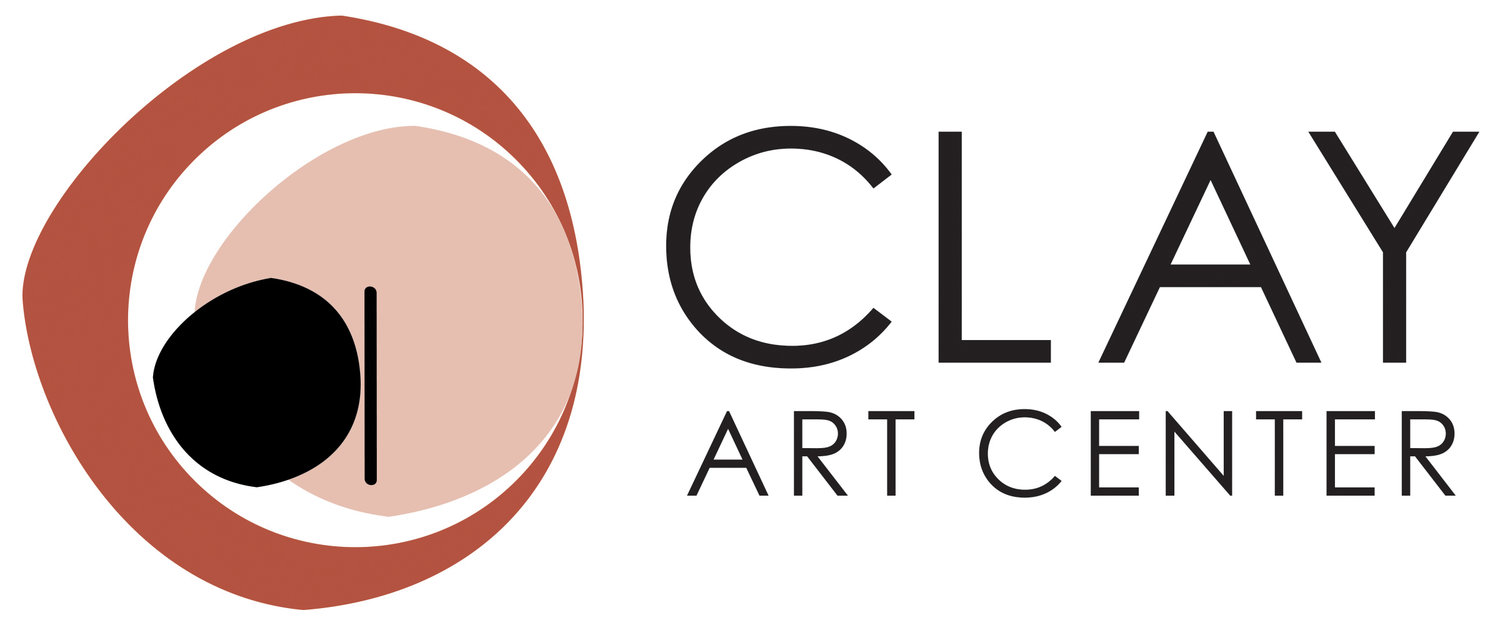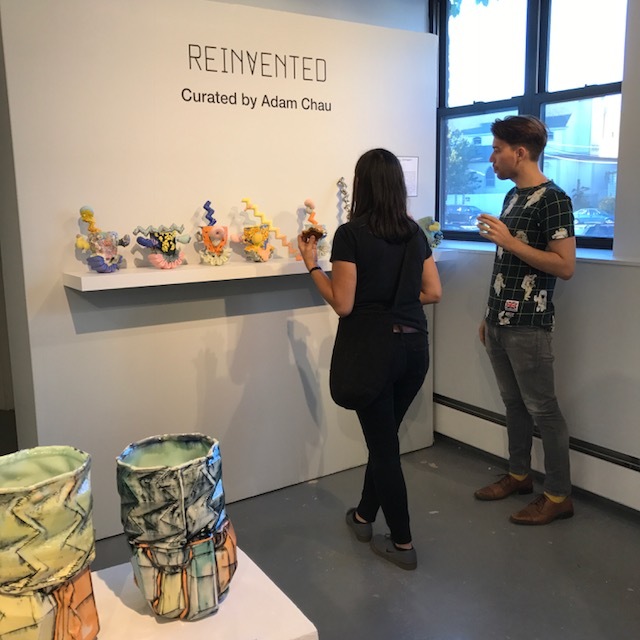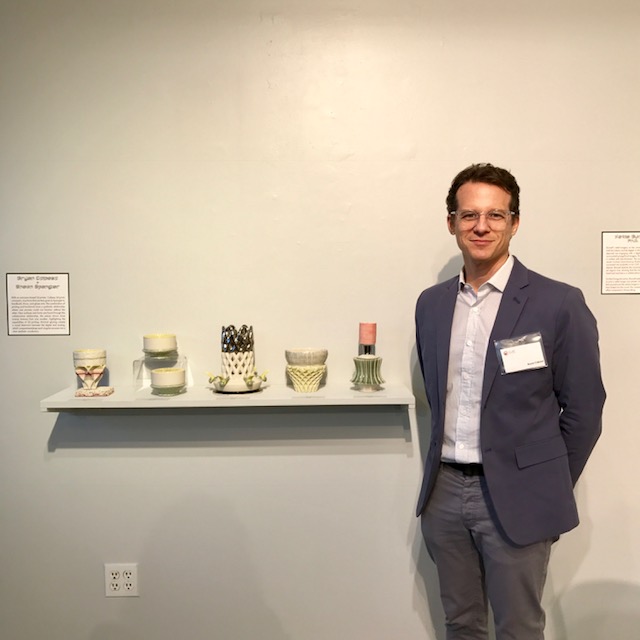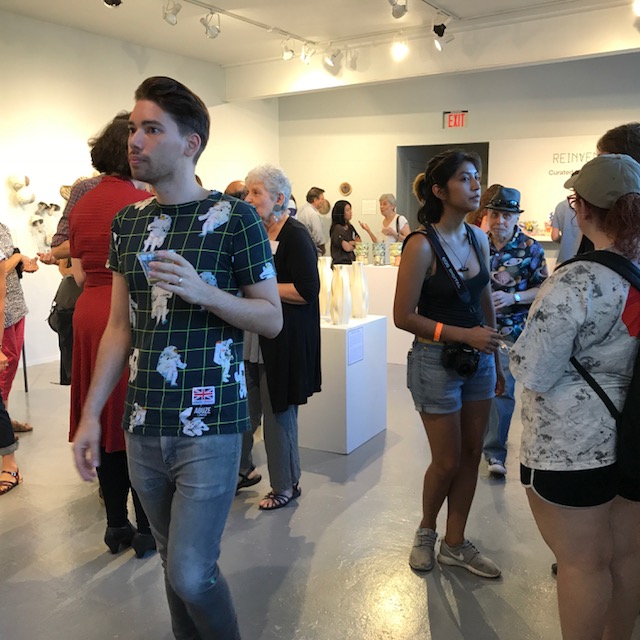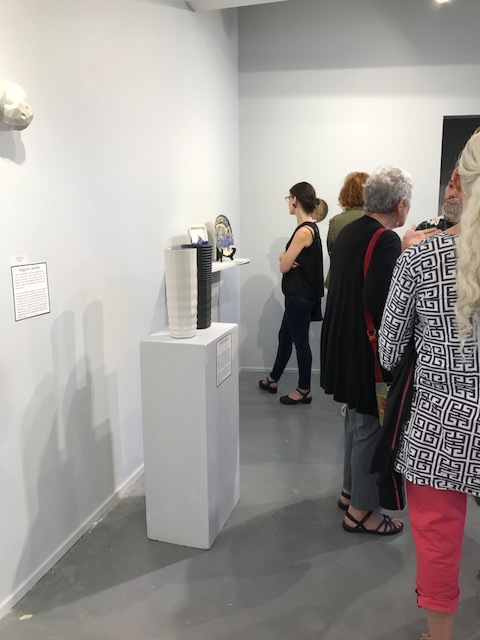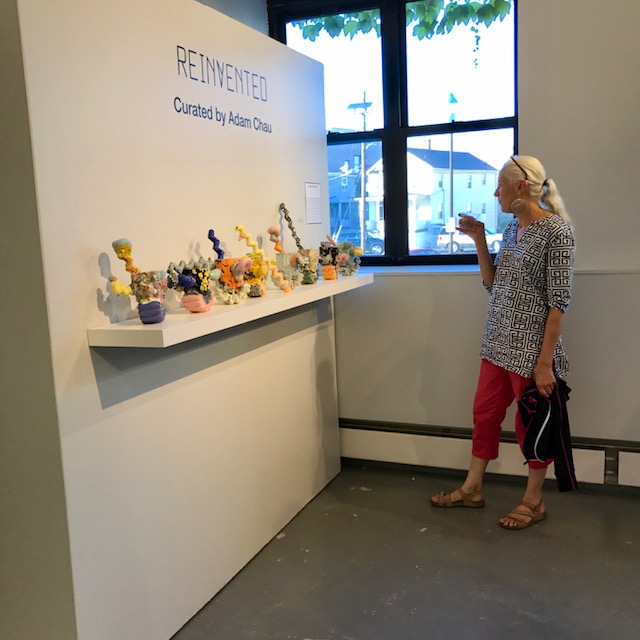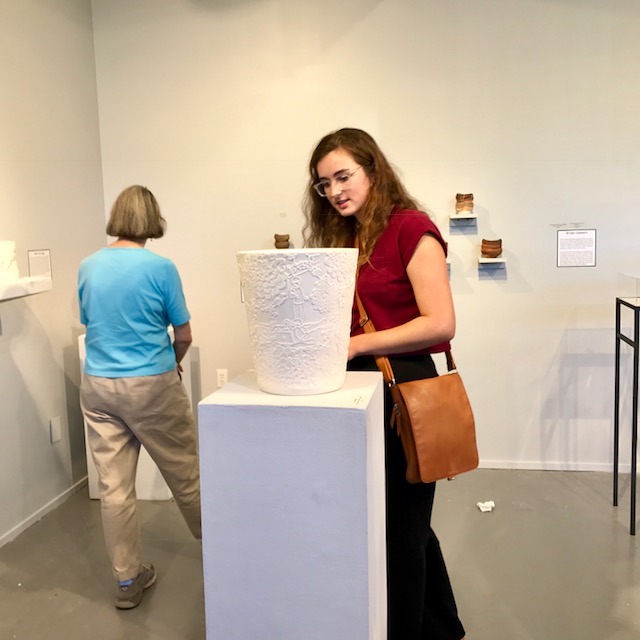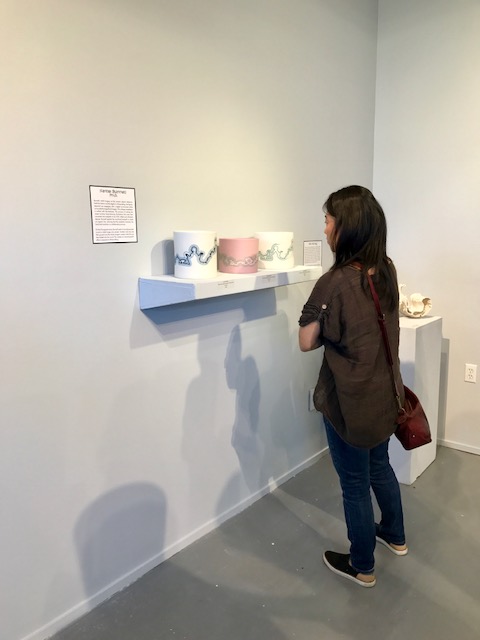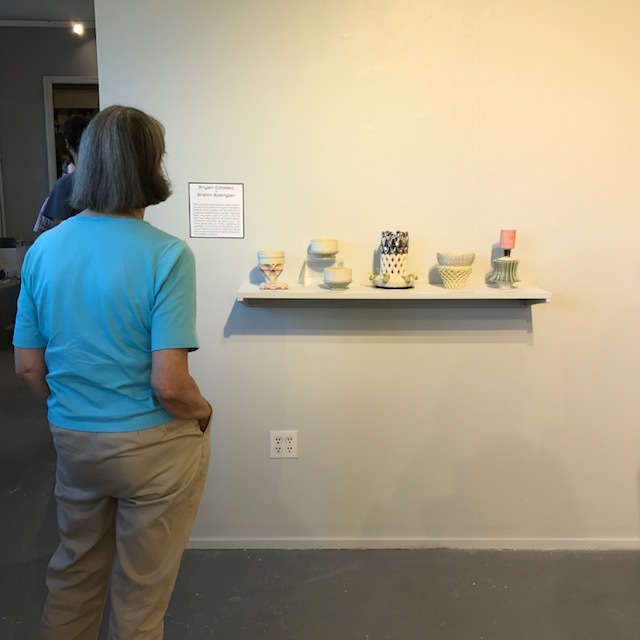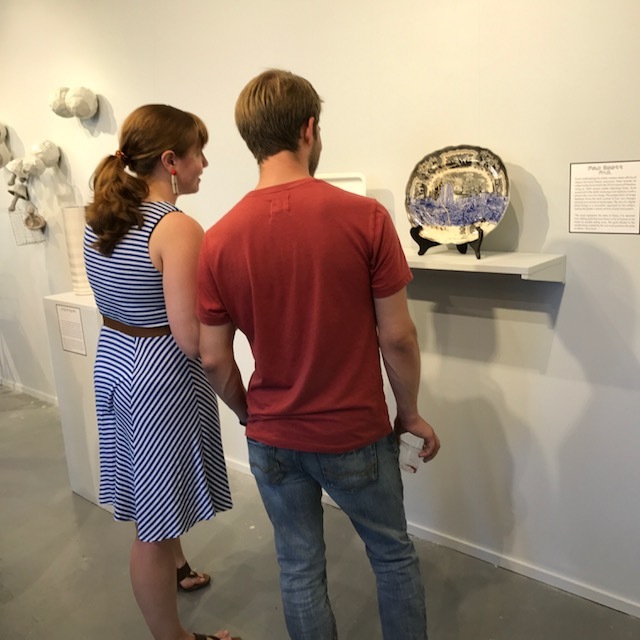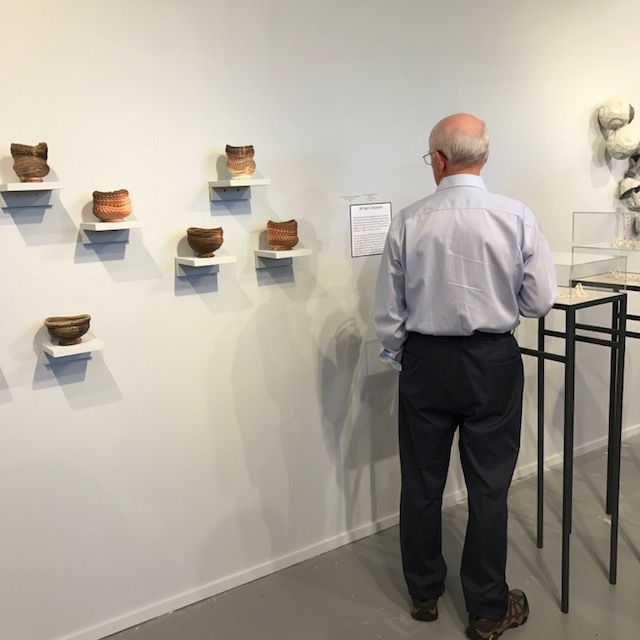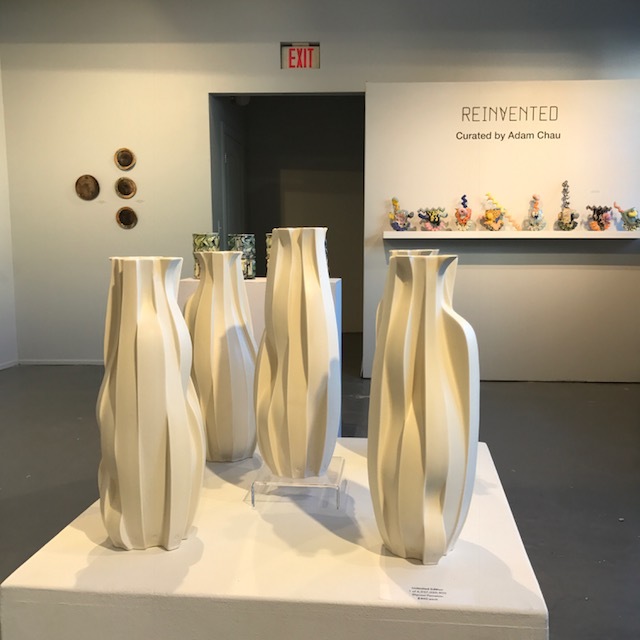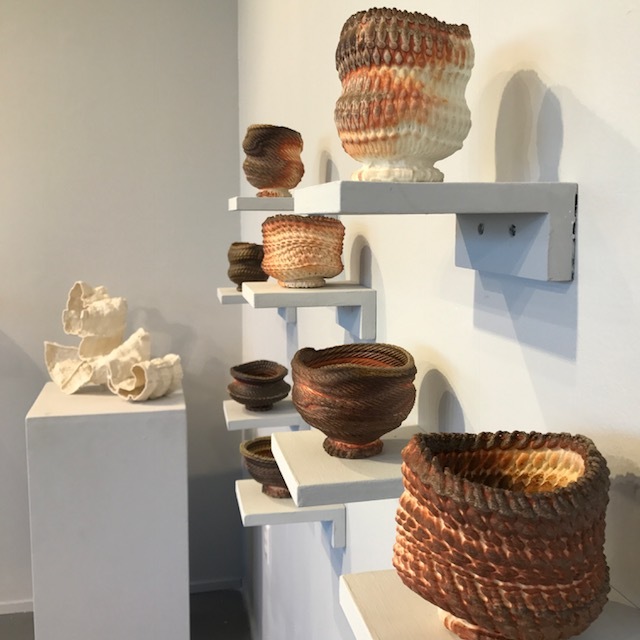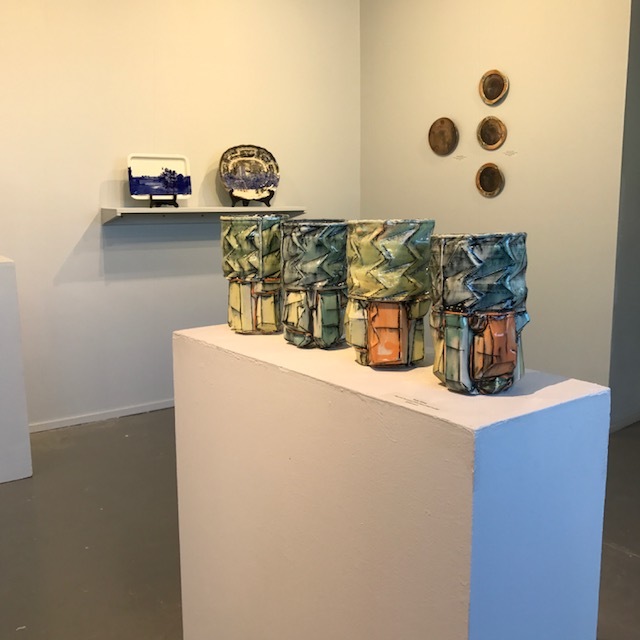Reinvented Opening Reception
REINVENTED opened September 23rd as the culminating exhibition of our 60th anniversary year. Adam Chau, Clay Art Center's Program Manager, has curated a twelve person exhibit featuring artists who utilize digital technology in a traditional studio practice. It was an incredible turnout to see this groundbreaking show. Don't miss seeing these amazing works in person in the gallery through November 11th. All works are available for purchase along with a catalogue.
"The panelists were so varied, of the highest professional standing, and so clearly spoke to the impact of Technology not only on Clay, but on education, aesthetics, socialization and production - all of which Clay Art Center holds dear." -Judith Weber, Clay Art Center Board President
Letter from the Curator
The Future Now Symposium on September 23rd brought disparate disciplines together for the sake of technology. I'm not sure if any one person in attendance could have expected such passion for technology as our panelists delivered their concise and expert experiences. The discussion that ensued embodied my hopes to shine a light on the evolution of technology and to provide real world applications, instead of esoteric examples. Here are some personal takeaways that I thought would be of use to reflect on if you attended, and perhaps some facts to consider when viewing the REINVENTED exhibit, on view at Clay Art Center through November 11th:
1. The Curve of Hype. Martin Bechthold, Director of the Doctor of Design Program at Harvard University, touched on this during the panel discussion. The image on the right is the illustration of this curve, which Bechthold said technology hype is still at the peak. This projection shows how novelty plays a role in the popularity and application of a new process. When looking at the REINVENTED exhibit I would consider this curve in terms of what it means to have something be 'practical' or 'novel'. How does this change your perception of either process or object?
2. Teamwork. What blew my mind was Jennifer Zwilling's comment (Director of Artistic Programs, The Clay Studio) to Shapeways Production Ceramicist, Liz New's discussion point on group-based practice, where there is a decentralization of process under one person (perhaps where the term 'design' comes in). To Jennifer's point, prior to the 20th century, craftsmen built objects in teams (faberge being a classic example) and perhaps we are returning to collaborative based environments. Bryan Czibesz and Shawn Spangler in the Reinvented show is a perfect example of this. Will the advancement of technologies in the arts encourage more collaborative works in the future?
3. Education. It seemed like a unanimous decision that technology education is slow (and perhaps happens naturally in our contemporary environment?) just as software development slowly evolves. I considered my own education in technology being derived from my schooling in design, however I wonder if I would have naturally gravitated towards technology. Let's consider the potter’s wheel - it takes years to master it, so why is technology any different? If you were given access to machinery and the education on how to use it, would CNC and 3-D printing machines be just other tools for artists to use, like the potter’s wheel?
On another note, the most amazing point of the night wasn't a speech or an image, or a piece of artwork (although all of that was compelling!) - it was when an artist and a panelist asked to exchange contact information and neither had business cards; I whipped out my phone and pressed the envelope icon that we all recognize as gmail and with a few jabs with my finger I had had connected the two via email - 10 seconds tops. THAT is the magic of technology; connecting people together. I hope that you, too, can connect with Clay Art Center and be a part of our future.
-Adam Chau, Program Manager
